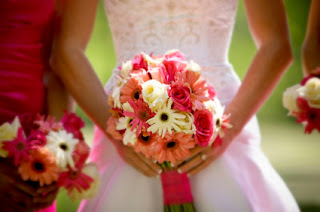For years roses have been considered as one of
the staple romantic gifts, along with chocolates. Thus it comes as no
surprise that men are willing to pay a considerable sum just to give a
good looking, bouquet of fresh roses to their special someone.
But what most guys do not realize is that
there is a secret message behind the color of a rose. That’s right! Even
the colors of a rose convey a secret meaning. This started in the
Roman empire when men would discreetly tap roses to express their
feelings for a woman. So you should learn which color of rose you
should give to your loved one.
The most popular color of rose, red, stands for passionate and ever lasting love. White stands for purity as well as brightness. Did you know that when a man offers white roses to a woman, he is indirectly saying that the woman is an angel. When white and red roses are combined, it means that the man is professing unity.
One of the more underrated types is the pink
roses. Pink roses, however, can mean a lot of things. Pink roses can
come in different shades and meanings. Deep pink means respect and
gratitude. On the other hand, light pink roses express sympathy.
Then there are yellow roses, which denote
friendship and caring. On the other hand, orange roses mean a new
beginning. This is the reason why many bridal bouquets are dominated by
orange roses. Deep burgundy rose meanwhile is a way for a person to
tell that someone is more beautiful than she realizes. Then there are
other exotic rose colors which all denote various meanings. Green rose
for one represents fertility. Blue means mystery and intrigue. Purple
stands for love at first sight. A black rose of course signifies death
and morning, and also new beginnings.
Colors do not only signify different
meanings. The presentation also represents a message. For example, if
red and pink roses are combined, it means the receiver is young and
beautiful. A bouquet of roses that have yet to blossom expresses young
love. Receiving a bouquet of all white roses means someone is in love
with a girl although the guy thinks she is still too young. Combination
of red and yellow roses means someone is inviting the receiver to have
fun.
Giving out roses these days is a lot easier.
In the past, men have to bother themselves by dropping by a flower shop
and shopping for fresh flowers they’d give to their loved one. Then
they have to drive all the way to the place where their partner works or
lives. Today, one does not have to go through a lot of hassle in order
to send out fresh flowers to their cherished one. Many flower delivery
companies are in existence, and the good news is it takes a few clicks
to order the delivery of fresh flowers to a particular person. One can
choose the color of the rose, be it red or pink roses. They can also
select the arrangement they want, and even throw in messages and other
gift items like chocolates and teddy bear. Those with credit card can
usually avail of prompt delivery of flowers, and it takes a few days for
the flowers to be delivered to a particular place.
One can choose the type of bouquet for their
flower delivery order. An increasing number of people are opting for
mixed floral arrangement since it includes a variety of flowers,
maximizing the appearance of the bouquet what with the various colors in
it.



































.jpg)







